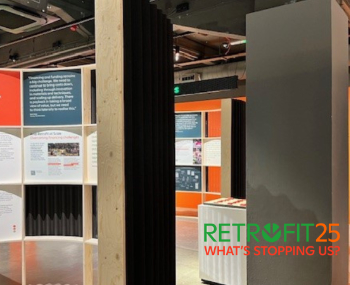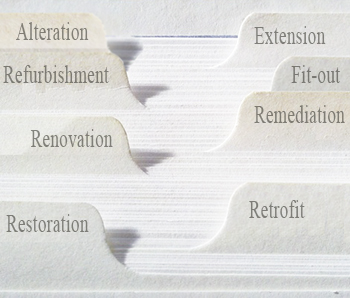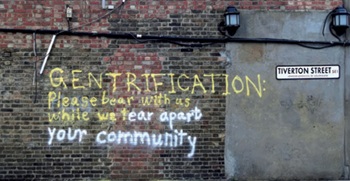Internal contaminants and decay of concentration
The impacts of the global pandemic are numerous however one in particular has been a better understanding of the importance of good ventilation in buildings. Specifically the World Health Organisation published information about the airborne transmission of COVID-19, which further emphasises the importance of good, effective ventilation.
One of the specific terms relating to air contamination and the impacts of air replacement can be referred to as decay of concentration, also referred to as half-life which describes the impact air change rates have in the dilution or decay of a contaminant contained with in air.
The decay of the concentration can be expressed by the equation:
- C = Cmax . (e -t/)
- C = [Cmax, 0] as t = [0, ∞)
Where:
- t is the time from the start of the rise or decay (s)
- τ is known as the “half-life” or air change (s)
- C is the concentration at time t (ppm)
- Cmax is the maximum concentration during rise or decay (ppm)
- τ is calculated by:
= V/Q
Where:
- V is the volume of the room (m3)
- Q is the ventilation rate (m3/s)
The initial concentration before any decay, is the maximum concentration described as Cmax. When t=τ (half-life or 1 air change), then the concentration in the room has reduced to 0.37Cmax. and when t=3τ, then the concentration C= 0.05.Cmax. This means that after 3 half-lives, the concentration in the room has been reduced by 95%.
Therefore in practice, 3 τ is considered to be the time to achieve steady state conditions, for a rise, or the time to clear the room, for a decay.
We do have to take into account the fact that the air supplied must be fresh, i.e. not recirculated and that the ventilation must be effective; fresh air must not be short circuited into the extract and it must reach everywhere in the room, to avoid areas of high contaminant concentration (stagnation).
The mechanical air change rate provided by the ventilation system is not often the same as the effective air change rate. The concept of a “mixing factor, k” can be used to describe the quality or effectiveness of the mixing process in a space. Mathematically, Q'=kQ where k = 1 for ideal mixing and k = 0.5 for poor mixing. The effect on decay levels is shown in the following equation:
Where:
- τ’ is the room’s “half-life” (s)
- V is the room’s volume (m3)
- Q is the mechanical, theoretical ventilation rate (m3/s)
- Q’ is the effective ventilation rate (m3/s)
Substituting the k value into the decay equation, the following expression is obtained:
C = Cmax . (e -t.k/)
For example, for a k factor of 0.6, when t=τ(half-life), then the concentration in the room has reduced to 0.55 Cmax, instead of the original 0.37Cmaxand when t=3τ, then the concentration is still 0.17.Cmax, compared to 0.05 for k=1.
This means that it will take longer to purge the contaminant from the room i.e. If the ACR of an isolation room is 10 ACH, for a k value of 0.6, the effective ventilation rate would be 6 ACH.
BSRIA has studied several hospital isolation rooms, with dedicated ventilation. The k factor in those rooms, which were considered well-mixed, was k= 0.8, calculated using gas tracer methodologies.
This is based on an article published on the BSRIA website as "New World Health Organisation information emphasises effective ventilation in buildings" dated June 2020.
[edit] Related articles on Designing Buildings
- Air change rates.
- Air filtration and clean Indoor air quality standards.
- Air tightness in buildings.
- At a glance - Indoor air quality.
- BSRIA articles on Designing Buildings Wiki.
- Ensuring good indoor air quality in buildings.
- HVAC balancing.
- HVAC industry defines post COVID-19 changes.
- Indoor air quality.
- Indoor air velocity.
- Let us evolve our buildings from being passive structures to interactive and reactive systems.
- Mechanical ventilation's role in improving indoor air quality.
- Timber and healthy interiors.
- Ventilation.
- Ventilation and control of COVID-19 transmission.
Featured articles and news
The context, schemes, standards, roles and relevance of the Building Safety Act.
Retrofit 25 – What's Stopping Us?
Exhibition Opens at The Building Centre.
Types of work to existing buildings
A simple circular economy wiki breakdown with further links.
A threat to the creativity that makes London special.
How can digital twins boost profitability within construction?
The smart construction dashboard, as-built data and site changes forming an accurate digital twin.
Unlocking surplus public defence land and more to speed up the delivery of housing.
The Planning and Infrastructure Bill
An outline of the bill with a mix of reactions on potential impacts from IHBC, CIEEM, CIC, ACE and EIC.
Farnborough College Unveils its Half-house for Sustainable Construction Training.
Spring Statement 2025 with reactions from industry
Confirming previously announced funding, and welfare changes amid adjusted growth forecast.
Scottish Government responds to Grenfell report
As fund for unsafe cladding assessments is launched.
CLC and BSR process map for HRB approvals
One of the initial outputs of their weekly BSR meetings.
Architects Academy at an insulation manufacturing facility
Programme of technical engagement for aspiring designers.
Building Safety Levy technical consultation response
Details of the planned levy now due in 2026.
Great British Energy install solar on school and NHS sites
200 schools and 200 NHS sites to get solar systems, as first project of the newly formed government initiative.
600 million for 60,000 more skilled construction workers
Announced by Treasury ahead of the Spring Statement.
The restoration of the novelist’s birthplace in Eastwood.
Life Critical Fire Safety External Wall System LCFS EWS
Breaking down what is meant by this now often used term.
PAC report on the Remediation of Dangerous Cladding
Recommendations on workforce, transparency, support, insurance, funding, fraud and mismanagement.
New towns, expanded settlements and housing delivery
Modular inquiry asks if new towns and expanded settlements are an effective means of delivering housing.

























